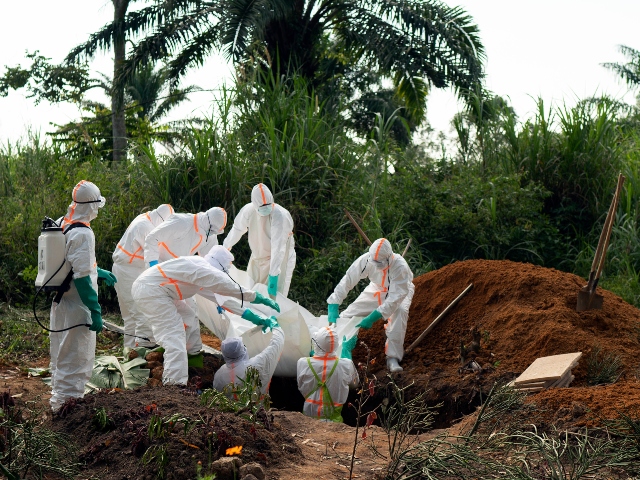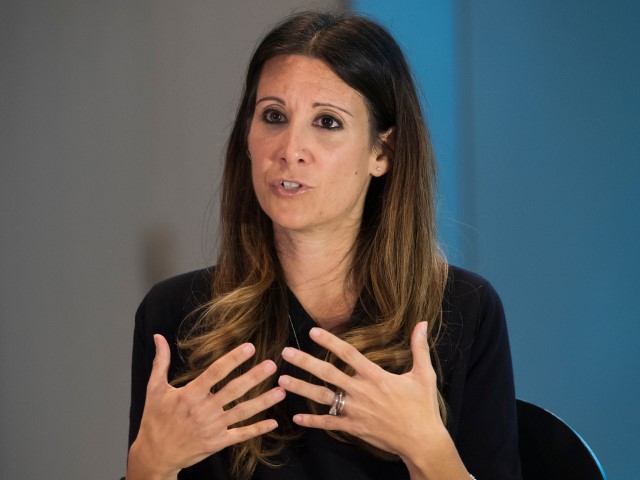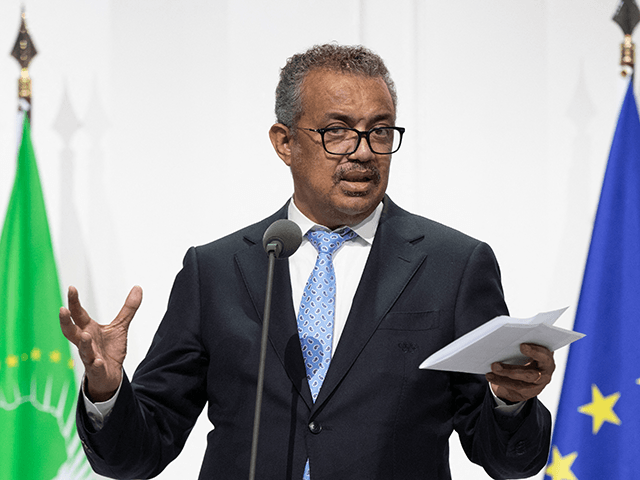World Health Organization (W.H.O.) Director-General Tedros Adhanom Ghebreyesus told reporters this week that the number of documented Chinese coronavirus deaths dropped nearly 90 percent between February and November of this year.
During the W.H.O.’s regular press conference on Wednesday, Tedros emphasized that the 90-percent drop still meant that nearly 10,000 people had died in the last week – “10,000 too many for a disease that can be prevented and treated.” W.H.O. experts at the event emphasized that science regarding the treatment of Chinese coronavirus had advanced to such a stage that deaths were highly preventable and the world’s public health infrastructure should focus on access to treatment.
In a noted shift from merely months ago, the W.H.O. press conference did not primarily focus on the Chinese coronavirus pandemic, instead discussing concerning health situations such as the ongoing Ebola outbreak in Uganda.

An Ebola victim is put to rest at the Muslim cemetery in Beni, in Congo, on July 14, 2019. Health authorities in neighboring Uganda on Tuesday, Sept. 20, 2022, reported that a man who died a day earlier had tested positive for the virus that causes Ebola and referred to a potential new outbreak. (Jerome Delay, File/AP)
“Just over 9,400 [Chinese coronavirus] deaths were reported to W.H.O. last week, almost 90 percent less than in February of this year, when weekly deaths topped 75,000,” Tedros announced. “We have come a long way, and this is definitely cause for optimism, but we continue to call on all governments, communities and individuals to remain vigilant.”
Tedros warned that the rate of government documentation of positive coronavirus cases and treatment had dwindled, meaning the W.H.O.’s statistics were increasingly incomplete.
“Almost 10,000 deaths a week is 10,000 too many for a disease that can be prevented and treated,” Tedros asserted. “Testing and sequencing rates remain low globally, vaccination gaps remain wide, and the continued proliferation of new variants remains concerning.”
“W.H.O. continues to urge caution and we continue to urge everyone to be fully vaccinated, including getting your next dose if it’s due,” he advised.
Elsewhere in the press conference, the W.H.O.’s technical lead on Chinese coronavirus, Maria Van Kerkhove, confirmed that the disease is still fueling a pandemic but repeated Tedros’ assertions that deaths from coronavirus are now largely preventable.
“[Chinese coronavirus] is still a pandemic and it’s still circulating quite rampantly around the world,” Van Kerkhove asserted. “In the latest update, what we see is there’s more than two million cases that were reported in the last seven days and we know that this is a substantial underestimate of the true circulation right now because surveillance has declined and testing has declined.
“The DG just reported that in the last seven days alone more than 9400 people died from COVID-19 and this is tragic because we have tools that can actually prevent these deaths from happening,” she continued, suggesting “better use of the vaccines, [Chinese coronavirus] vaccines, that are safe and effective and preventing people from developing severe disease.”
For those already infected, Van Kerkhove noted that a “number of treatments that are available for people who have severe disease that can prevent them from dying” should keep death counts low.
“We are certainly in a much better position than we were a couple of years ago, even one year ago, because we have so many of these tools, but we have to remain vigilant because the fight is not over,” she concluded.

World Health Organization’s technical lead on the coronavirus pandemic, Maria van Kerkhove gestures during an interview with AFP in Geneva on October 13, 2020. (RICHARD JUILLIART/AFP via Getty Images)
Tedros, in particular, has expressed growing optimism throughout the year regarding the global Chinese coronavirus situation.
“Last week, the number of weekly reported deaths from COVID-19 was the lowest since March 2020. We have never been in a better position to end the pandemic,” Tedros announced at a press conference in September. “We are not there yet but the end is in sight.”
The W.H.O. director-general, however, has emphasized that public health experts still urge caution and expansion of resources to fight the pandemic even as cases go down. In the September conference, Tedros suggested that ending mitigation efforts could result in “more variants, more deaths, more disruption and more uncertainty” even as the global picture improved.
“A marathon runner does not stop when the finish line comes into view. She runs harder, with all the energy she has left. So must we,” he said at the time. “We can see the finish line. We are in a winning position but now is the worst time to stop running. Now is the time to run harder and make sure we cross the line and reap the rewards of all our hard work.”
Outside of deaths, the W.H.O. documented a 15-percent drop in cases around the world between this week and the week beginning October 31, but again expressed in its weekly report frustration with diminished testing and documentation.
“The true number of incident cases is an underestimate due to a decline in testing globally,” the November 9 weekly report read.
The only monitored regions that saw a week-on-week increase in the number of documented cases as of Wednesday were Southeast Asia and the Western Pacific. Those two regions also saw an increase in deaths, contrary to decreases everywhere else in the world. Highlighting the role that government documentation discrepancies are playing in case reports, Southeast Asia documented a dramatic 535-percent increase in deaths in the past week, but the W.H.O. attributed this to “batch reporting from India,” not an organic increase in deaths.
“Current trends in reported [Chinese coronavirus] cases and deaths should be interpreted with caution as several countries have been progressively changing [Chinese coronavirus] testing strategies,” the W.H.O. report insisted, “resulting in lower overall numbers of tests performed and consequently lower numbers of cases detected.”

COMMENTS
Please let us know if you're having issues with commenting.